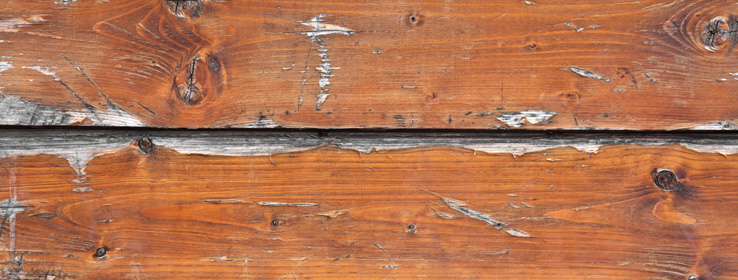DESCRIPTION
Wood with the appearance of severe mildew but will not lighten when tested with bleach. Darkening and decaying wood generally has a more solid, consistent appearance.
POSSIBLE CAUSE
Darkening of wood is caused by ultraviolet radiation. This can take place on wood that has never been coated with a protective coating (e.g. primer, paint or stain). It also can occur under clear varnishes and lightly pigmented stains. Different degrees of darkening can occur on different woods. If moisture penetrates into the wood, varnish coatings will peel due to wood decomposition under the coating. Woods that are exposed to weather are not protected against wood-destroying organisms. Eventually the wood decays and ceases to be a coatable surface.
SOLUTION
See Lead Information.
New woods should not be exposed to weathering for extended time periods. Paint and stain performance is best achieved when the new surface is coated before installation or immediately after installation.
If a wood surface is allowed to weather, the wood should be sanded to a fresh surface before priming. Wood that cannot be sanded to fresh wood must be replaced.
If the surface is wet, it must be allowed to dry thoroughly prior to coating.
Coatings can be applied to treated woods after the moisture content has dropped to a paintable level – usually 15% or below. To determine if the surface is waterproof, splash water on the surface. If the water is absorbed and the surface becomes noticeably darker, the surface is not waterproof. This test is especially recommended for pressure-treated wood and smooth cedar. It is crucial to ensure proper penetration of the coating.
EXTERIOR
PRIMER
(if needed)
Exterior Primer
SUGGESTED FINISH
Duration®
SuperPaint®
A-100®
WoodScapes® Stains
SuperDeck® Finishes
or reapply the same coating
CAULK
Stampede™ 1 Polyurethane Sealant
SherMax™ Urethanized Elastomeric Sealant
PowerHouse™ Siliconized Acrylic Latex Sealant




